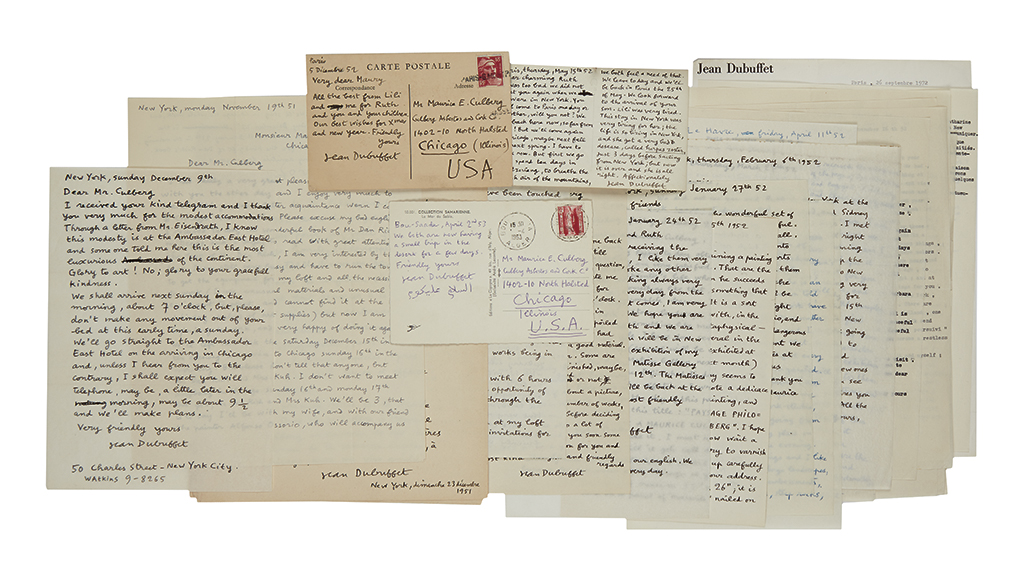The Voice & Hand of Frederick Douglass
One’s handwriting is unique unto oneself. For some, the style can remain consistent throughout the years. For others, the features that characterize their handwriting can change depending on circumstance, and evolve over time. Frederick Douglass falls into the latter category. Below, Marco Tomaschett, our autographs specialist, dives into the hand of the American abolitionist.
Frederick Douglass was an American hero whose moving story became widely known principally by means of his own voice: the public orations he delivered and the books he wrote. The first of Douglass’s published books was his Narrative of the Life of Frederick Douglass (1845), which has become one of the most recognizable examples of a genre of largely American literature–the slave narrative. Such narratives are both autobiographical and polemical in that they are intended to persuade the reader of the immorality of slavery. Part of the power of the argument in such narratives is the author’s testimony of horrifying treatment and of spiritual transcendence.
Although the value of some sorts of literature is independent of the truth of the statements they contain or the authenticity of authorship, from the perspective of nineteenth-century abolitionists, the effectiveness of such narratives was dependent upon truth and authenticity. The title pages of slave narratives usually include explicit claims that the statements within are true and that the author is the witness of the events described. Although there is no doubt that Douglass is the author in Narrative and the other writings attributed to him, the authenticity of his authorship is reinforced by the fact that we can observe the characteristics of his hand throughout his writings. To observe this, however, is not as straightforward as might be for many writers, because some of the features of Douglass’s handwriting style vary dramatically over his lifetime, sometimes over short periods.
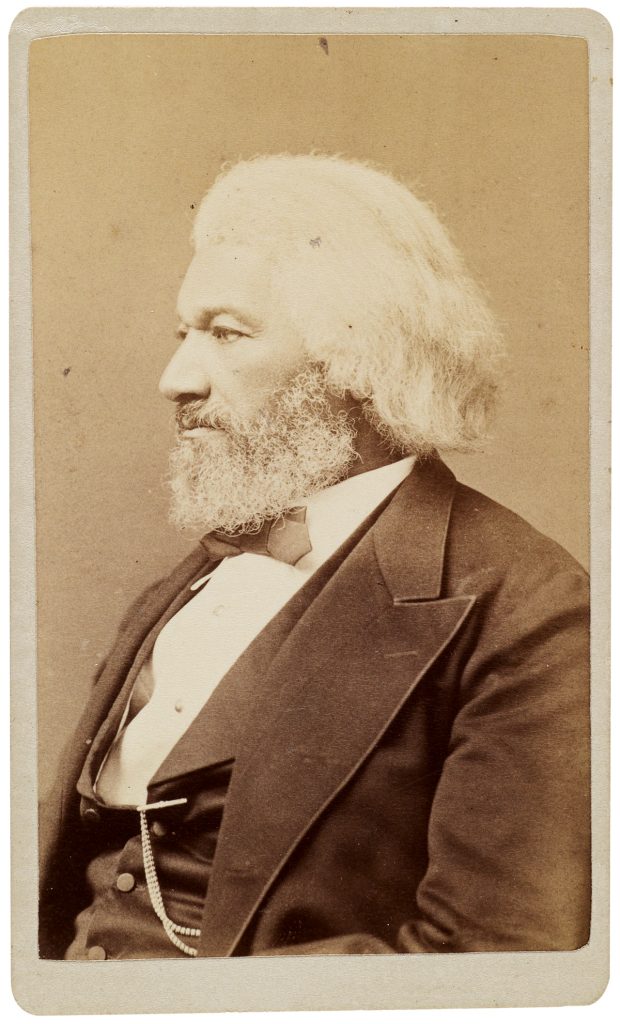
Beginning at around adolescence, the general features that make up one’s handwriting style tend to change gradually. For some, handwriting style is remarkably consistent: the hand of George Washington is famously so. At the other extreme are some whose style seems to change haphazardly, even within the same year: the hand of John F. Kennedy is one such example. Most often, however, radical shifts in style can be attributed to intentional changes, such as when taking extreme care in order to make a message as legible as possible, or when rushing in order to finish in a limited time, or when compressing or reducing one’s handwriting to fit into a limited space. Circumstance also affects style, as in the case of physicians or political leaders whose signatures change as they repeatedly sign under time pressure, or the case of travelers, who may be writing using convenient but suboptimal instruments or surfaces. Rarely, radical shifts in style are caused by personal injury, such as in the remarkable case of the right-handed Admiral Horatio Nelson, who lost his right arm during the Battle of Santa Cruz de Tenerife, surviving to write another eight years with his left hand. Except perhaps in the most extreme cases, such as that of Admiral Nelson’s, even the wildly erratic handwriting of people like JFK have consistent attributes that are distinctive of their hands.
Influences on Handwriting Style
A tremendous number of factors influence one’s handwriting style over the course of a lifetime, and some of those that have likely impacted the hand of Frederick Douglass are worthy of note. That Douglass learned to write later in life than many writers; that his education was inconsistent and intermittent; that his instructors varied in skill and style; and that his education was largely self-directed, these taken together suggest a possible explanation for certain idiosyncrasies in his writing style. When added to certain facts about Douglass’s later life, we begin to form a more complete account of style changes, such as that Douglass was often on the move, giving talks and attending meetings, writing all the while, sometimes in cramped spaces or in haste. An investigation of these causes is beyond the scope of this article, but it is useful to bear in mind these possible factors when considering three features of Douglass’s handwriting which vary dramatically. These are features that in many other writers remain relatively stable or change gradually over long periods: slant, x-height, and letter proportion.
Slant or Slope
Slant or slope is the angle in degrees at which most of the vertical strokes are made relative to the baseline, where zero is vertical. Consider these examples that vary from -25 to 40 degrees:
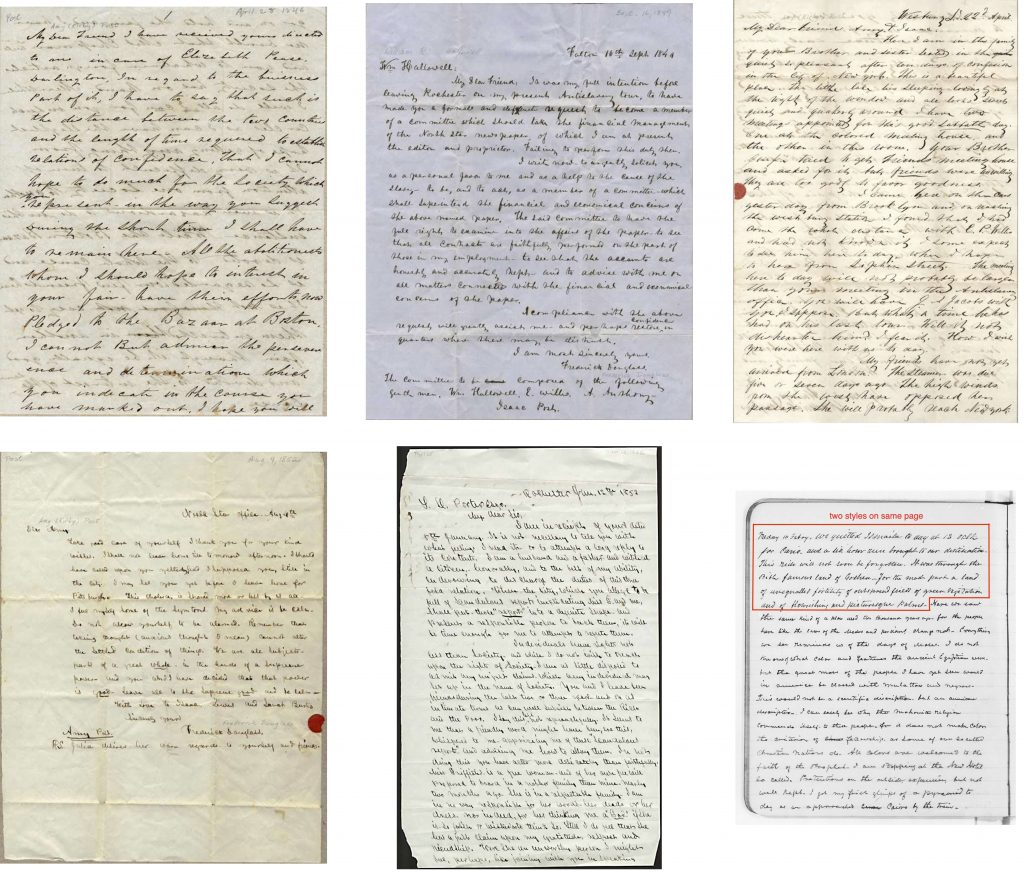
Bottom Row, from Left to Right: 1852: -5° slant1; 1852: -25° slant1; 1887: 5°, 30° slant2
X-Height
The average height of the lower case letters as a percentage of the average height of the capital letters is x-height or proportion. Again, we see fluctuation between 33% and 50%:
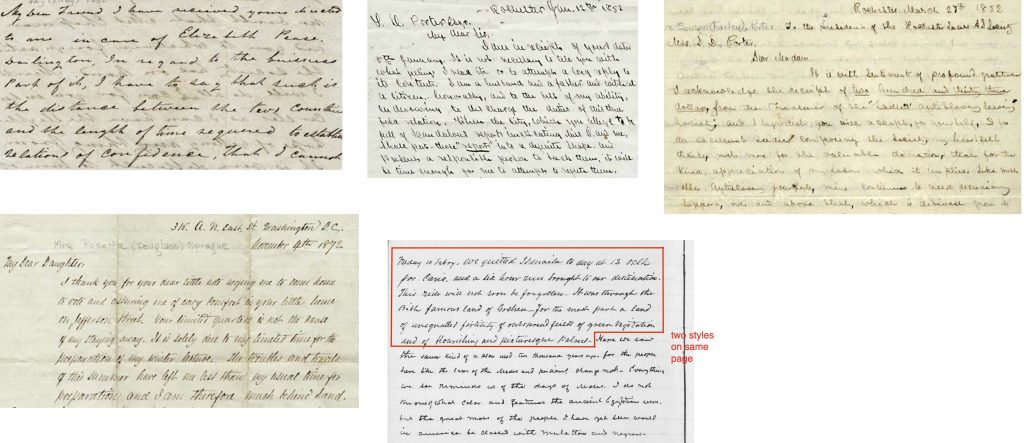
Bottom Row, from Left to Right: 1872: 50% x-height1; 1887: 50%, 33% x-height2
Letter Proportion
Finally, letter proportion is a measure of the extent of horizontal compression or, more specifically, the proportion of average letter height to width. Here, we have ratios varying between 2½:1 and 1:1:
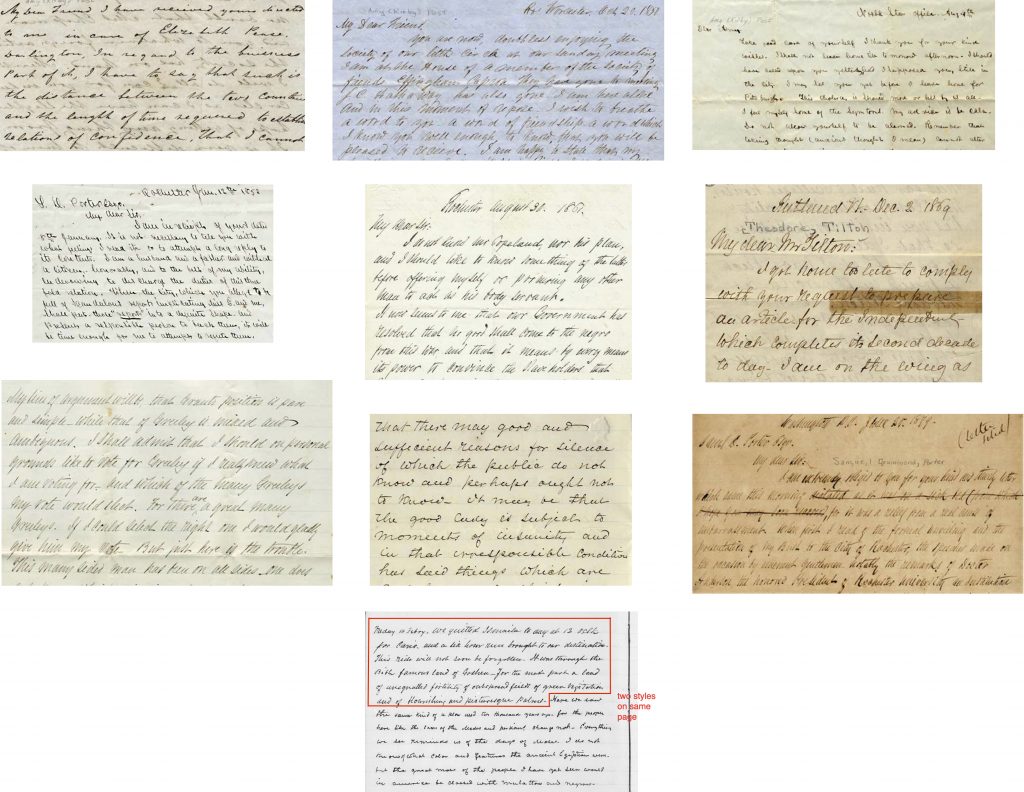
Second Row, from Left to Right: 1852: 1½:11; 1861: 2:11; 1869: 1:11
Third Row, from Left to Right: 1872: 2:11; 1873: 1:11; 1879: 2½:11
Bottom: 1887: 1½:1, 1:12
Frederick Douglass’s Handwriting
The Inter-Word Combination “Qu”
Despite this evident variation, however, there are features in Douglass’s hand that are consistent throughout his writing and which, taken together, help to form a distinctive characterization of his handwriting style. Although these features are not exhaustive, and even together they are likely insufficient to determine authenticity, any authentic example of Douglass’s handwriting is likely to include most of them. The first is the inter-word combination “qu” connected by a straight tail:
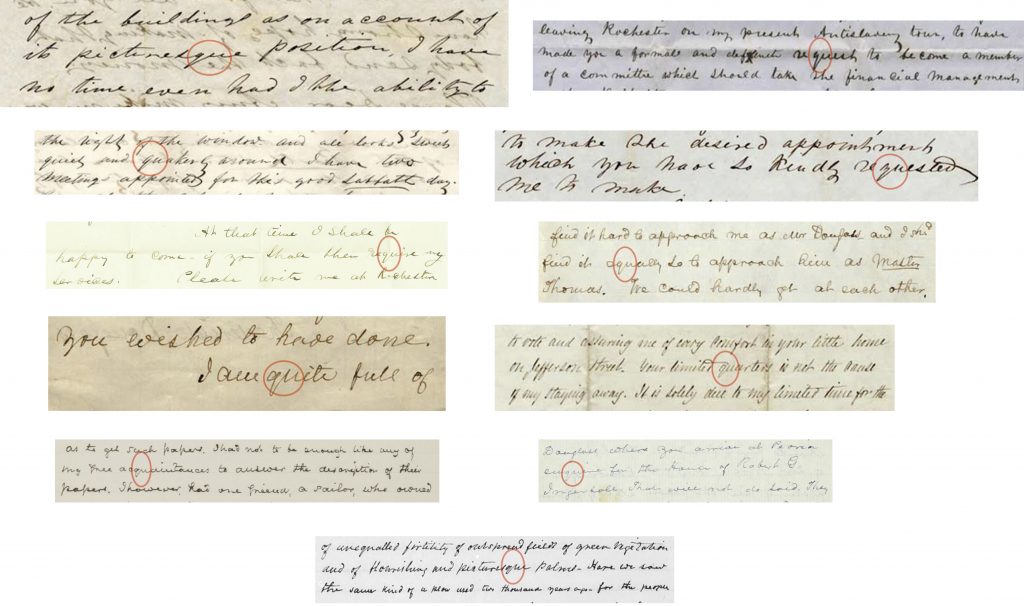
Third Row: 1855 (Swann); 18651; Fourth Row: 18691; 18721
Fifth Row: 18802; 1880 (Swann); Bottom Row: 18872
The Word-Initial “S”
Another consistent feature is the apex of the word-initial “s” rising above the mean line (the horizontal line midway between the baseline and the top of the capital letters):
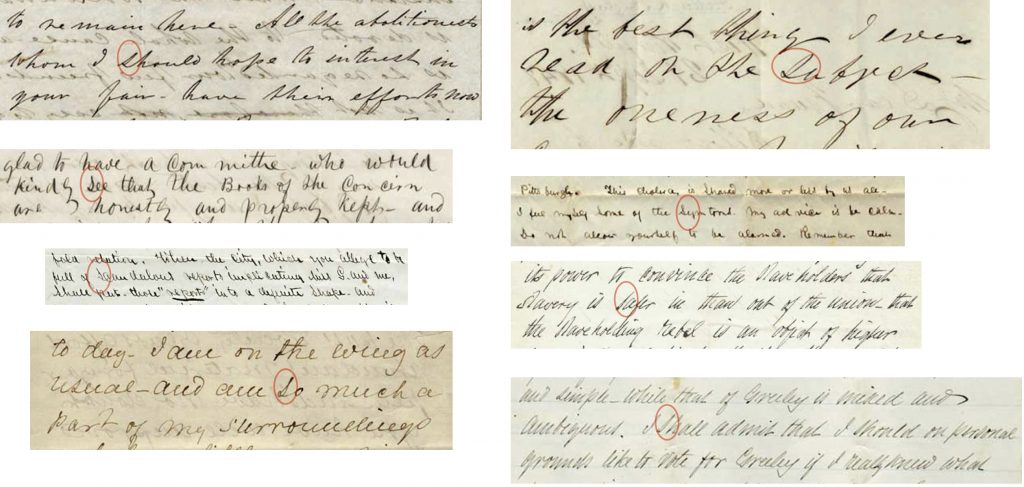
Third Row: 18521; 18611; Bottom Row: 18691; 18721
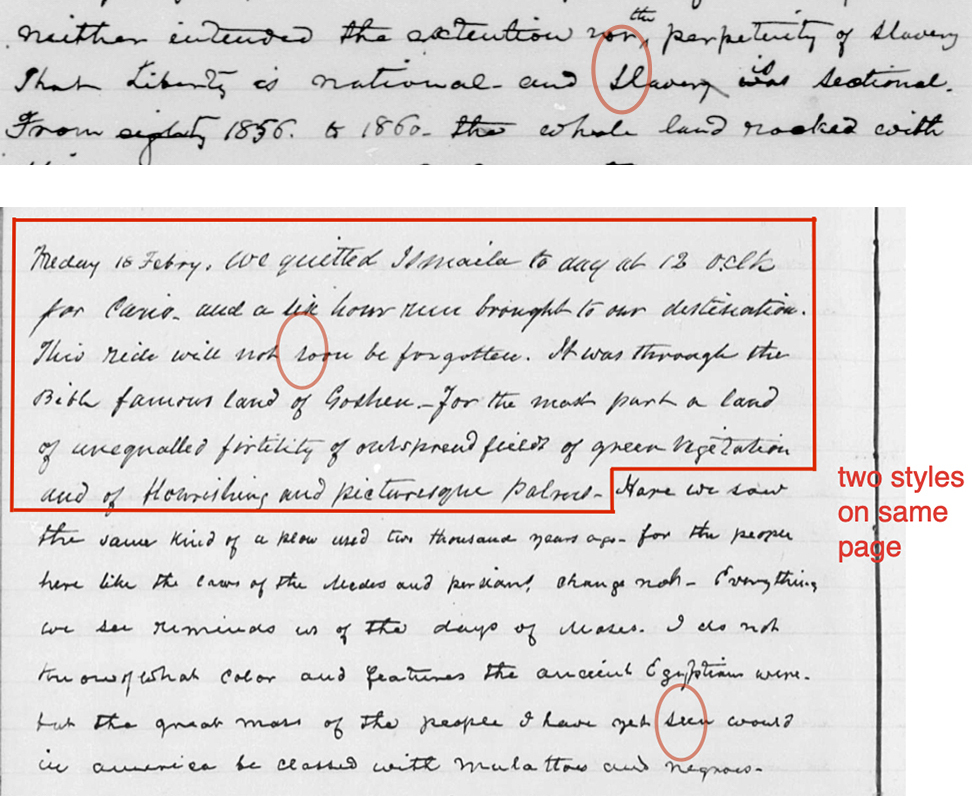
Bottom: 18872
The Word-Initial “P”
Yet another is the stem (vertical stroke) of the word-initial “p” rising above the mean line:
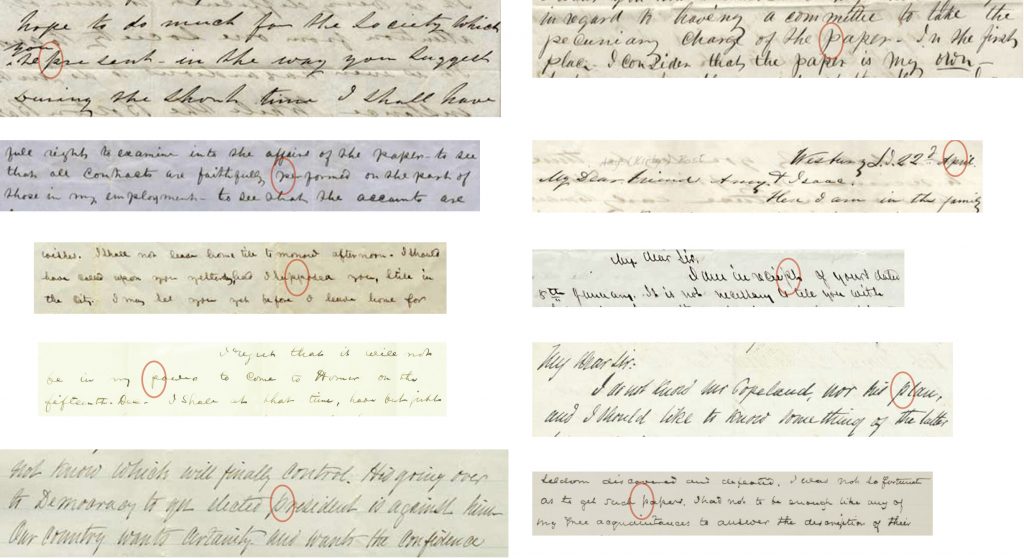
Fourth Row: 1855 (Swann); 18611; Bottom Row: 18721; 18802
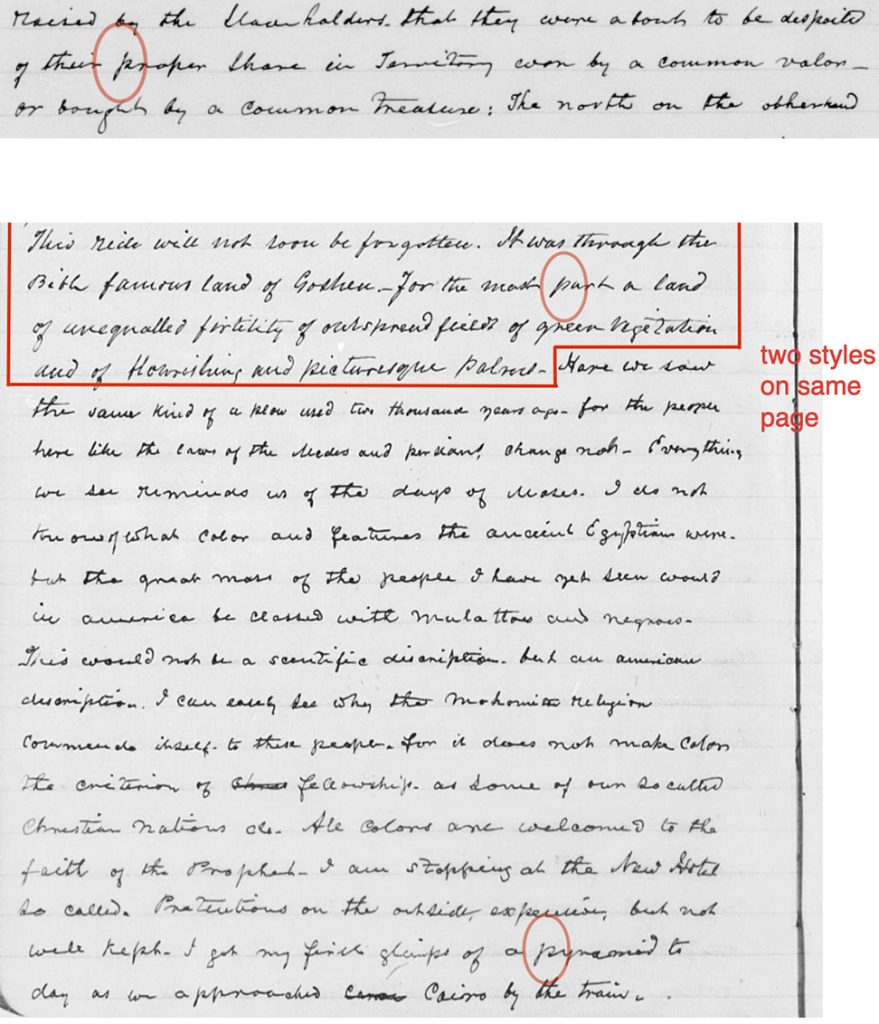
Bottom: 18872
The Word-Initial “Y”
Finally, one of the more characteristic features of Douglass’s hand, is the first arm of the word-initial “y” being higher than the second arm, often rising above the mean line:
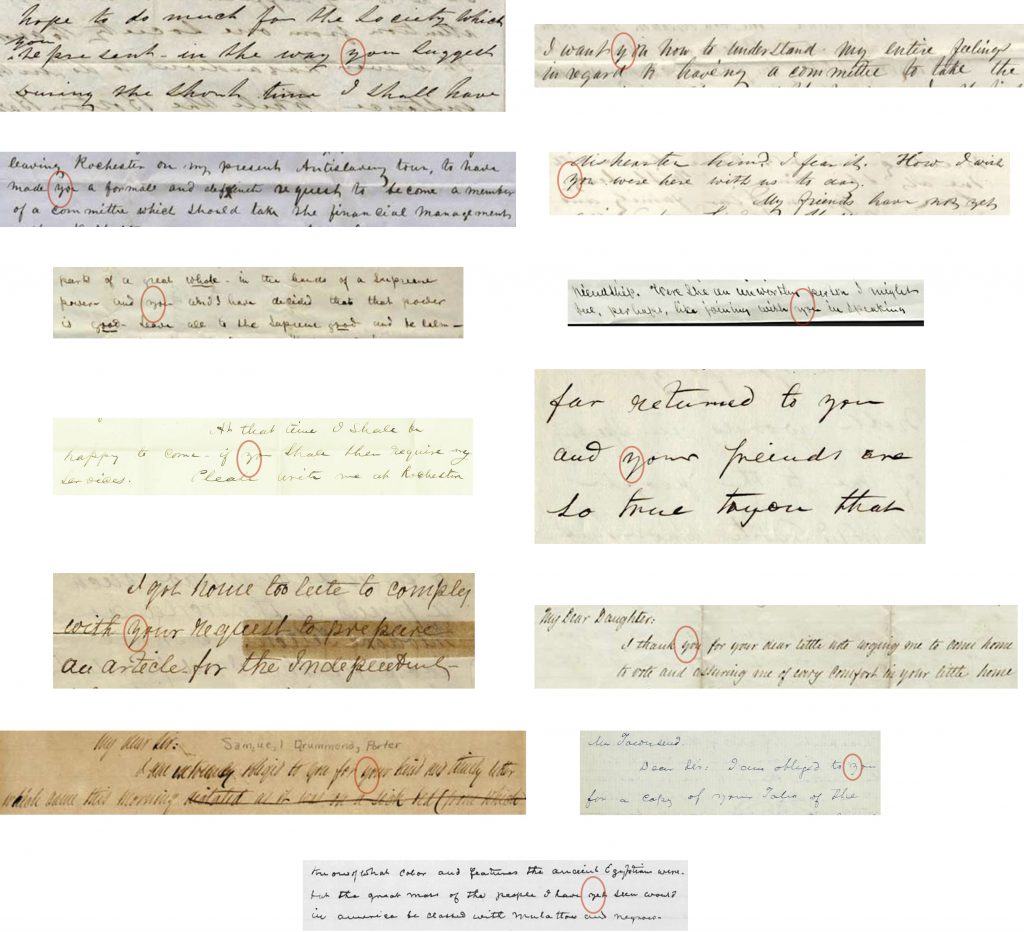
Fourth Row: 1855 (Swann); 18601; Fifth Row: 18691; 18721; Sixth Row: 18791; 1880 (Swann); Bottom Row: 18872
While we have insufficient space to do so here, a complete study of Douglass’s hand would include further analysis and comparisons with the handwriting of those who might have, or were known to have, served as secretaries to Douglass at various times during his life. This group includes his wife, Helen, daughter Rosetta, Charles Satchell Morris, Ebenezer Bassett, Samuel Drummond Porter, and Paul Laurence Dunbar.
Just as the authenticity of slave narratives were of special value to many of their nineteenth-century readers, autograph collectors naturally have a special interest in the authenticity of the manuscripts they admire. Although collectors of Frederick Douglass autographs should take care to ensure that a prospective purchase is a genuine example of Douglass’s handwriting, they need not be surprised that a speaker and writer, who led as remarkable a life as did Douglass, should have such a dynamic hand.
1. Courtesy of Rare Books, Special Collections, and Preservation, River Campus Libraries, University of Rochester
2. Courtesy of the Frederick Douglass Papers at the Library of Congress
Further Reading from Marco Tomaschett: Autographs & History Part I: U.S. Presidents and Autographs & History Part II: George Bernard Shaw & Enrico Caruso
Do you have an autograph by Frederick Douglass we should take a look at?
Learn about how to consign to an auction, and send us a note about your item.

